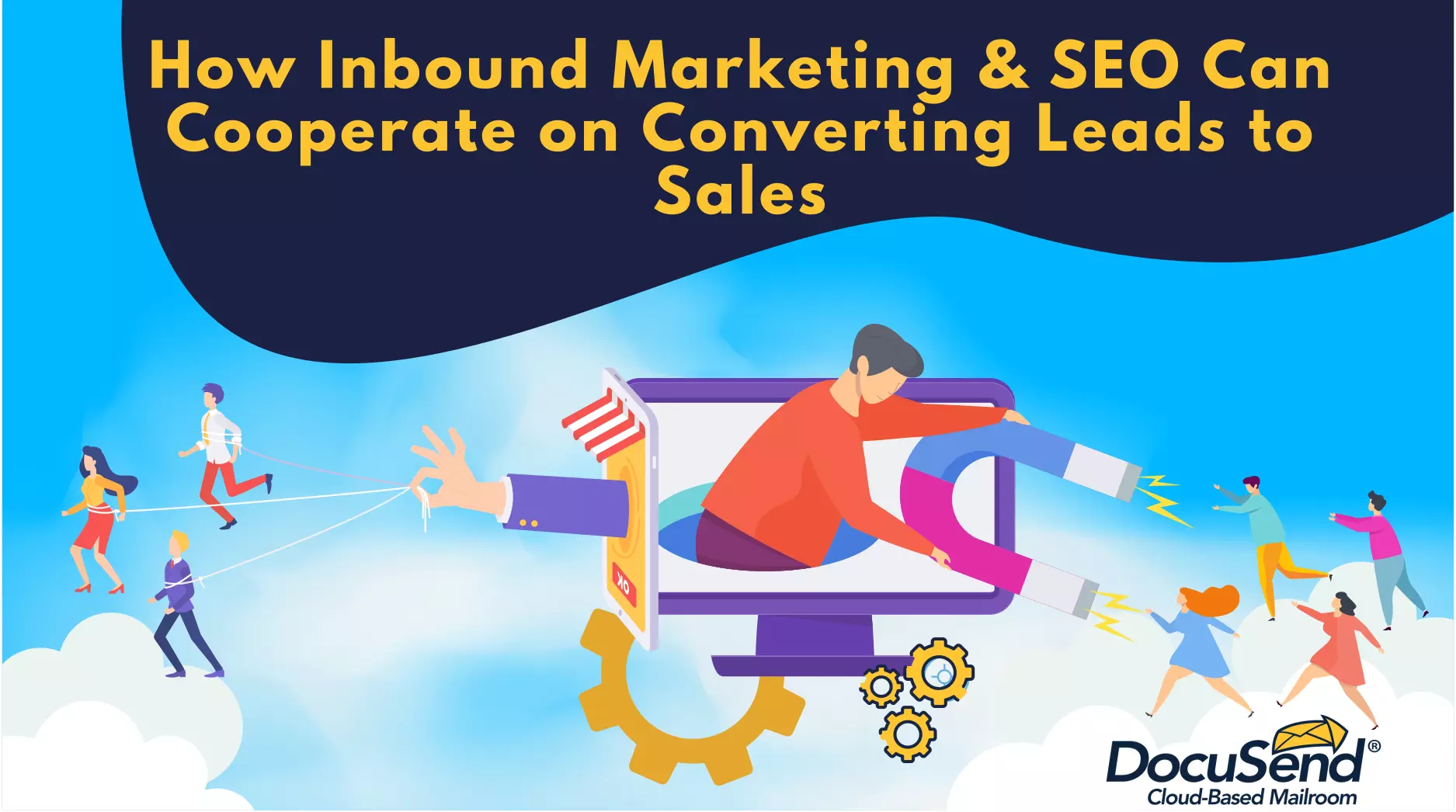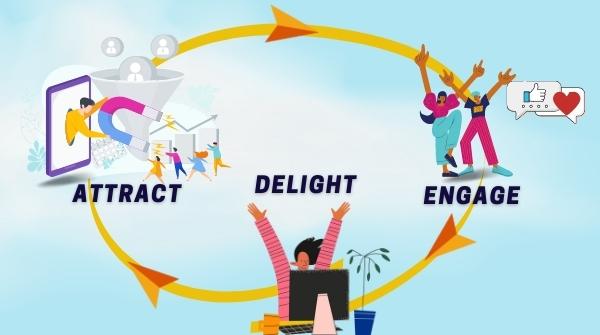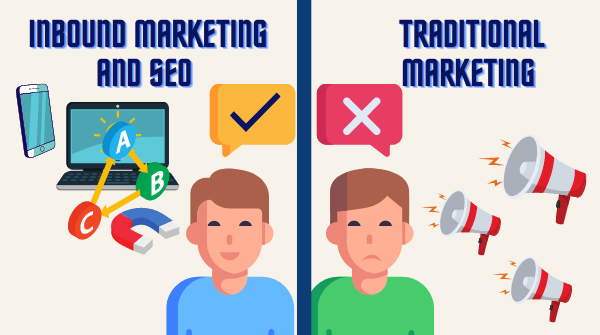How Inbound Marketing, SEO & GEO Work Together to Convert Leads into Sales

You and your personnel may have knowledge to share that can boost your business. How does this connect with inbound marketing? First, let’s define the term:
“Inbound marketing is a marketing methodology that is designed to draw visitors and potential customers in, rather than outwardly pushing a brand, product, or service onto prospects in the hope of generating leads or customers.” Source: Optimizely
Sharing your knowledge as an expert in your industry adds more value to your business than a pure sales pitch. How many of you dislike receiving marketing phone calls? Yup, me too, not always, but sometimes. It depends on the way they introduce the conversation or whether they call me on a really busy day to sell me a product that I am not interested in.
If making sales calls is part of your job, keep this in mind:
Use the power of human interaction. This is why social media posting is now at the top of a marketer’s to-do list. If you must call, make that first contact via phone call a human-to-human connection, just like you do on social media.
Nowadays, we like to search for what we need (it’s faster). First, we want the pertinent information about your product to be easy to find. If we’d like even more information, then we call, email, or start a chat with your customer support.
Right about now, you should be asking yourself…
How do I make my product easy to find?
Search Engines Rule – And So Does Google
According to Smart Insights statistics:
"The number of people using internet search engines is increasing… We can see the number of daily searches on Google – 3.5 billion, which equates to 1.2 trillion searches per year worldwide."
Now more than ever, Google is giving higher rankings to pages dedicated to helping, giving solutions, and answering common questions. Inbound marketing fits in perfectly with this perspective. For example, one technique is to find the keywords associated with a product and use them to discover what questions are the most asked.
Inbound methodology consists of 3 stages:

- Attract
- Engage
- Delight
Everyone in your company should understand these stages.

Why?
Simply so that they can apply them to interactive web design, product development focused on customers’ needs, and outstanding customer support.
How Is SEO Related to Inbound Marketing?
Often, SEO and marketing groups are each in their own silo. But if inbound marketing and SEO people work as a team, it can bring more traffic and successfully convert visitors into leads and paying customers.
Solid SEO strategies make a healthy website: well formatted, easy to read, and easy to navigate. Knowing how search engines work places your web pages in front of more people searching for information.
When someone has a problem to solve, inbound marketing makes exactly the right information handy by gathering detailed data about who your potential customers are, what problems they need to solve, and what language they use to describe their problems and search for solutions.
So, inbound marketing and SEO share the common goal of bringing more people to your website.
Why Is Inbound Marketing Winning Out?
We can answer this by first answering another question: What is the difference between traditional marketing and inbound marketing?
| Traditional Marketing | Inbound Marketing |
|---|---|
| Company-focused | Consumer-focused |
| Interrupts an individual’s life | Resolve a problem |
| Talks at the consumer | Collaborative |
These are major differences, wouldn’t you agree?
Enter Generative Engine Optimization (GEO)
Generative Engine Optimization (GEO) is the practice of optimizing content so that it is discoverable, relevant, and cited by AI-powered tools like ChatGPT, Google Gemini, Perplexity, and Bing Copilot. (Copilot definition)

One key insight we've uncovered is that Google Gemini doesn't always surface AI-generated responses for every search related to "Gemini". It only does so for specific keywords or phrases. This presents a valuable opportunity: By identifying these trigger points, you can strategically create content that aligns with them.
This increases your chances of being featured in AI-generated answers, which can significantly boost your brand’s visibility in AI-driven search environments.
- Attract: AI tools surface your content to users asking questions
- Engage: Well-structured, helpful content keeps users reading
- Delight: Being cited by AI builds trust and authority
This is where GEO comes into play. While traditional SEO remains important, GEO focuses on optimizing content for AI tools like Google Gemini, ChatGPT, Perplexity, and Bing Copilot. These platforms don’t just scrape the web in real time. They rely on:
- Web crawling and indexing (similar to Google Search)
- Pretrained language models trained on public content
- Trusted, high-authority sources
- Structured, high-quality content that’s easy to summarize and cite
If your content isn’t optimized or discoverable:
- It’s less likely to be included in AI-generated answers.
- You may lose authority over time to more active, up-to-date competitors.
- You miss out on citations and traffic from tools that reference live sources (like Perplexity.ai or Bing Copilot).
Some claim that “SEO is dead,” but in reality, it’s evolving, just like other professions have. Developers, content strategists, translators, and UX designers have all adapted to new technologies. SEO is no different. It’s shifting toward a more user-centric and AI-aware approach.
AI is becoming more and more reliable, but it still lacks nuanced human understanding, creativity, and emotional intelligence. That’s where we come in: to identify opportunities, share powerful stories, and make sure content truly connects with people.
Final Thoughts: Success Requires Teamwork
Now to address the main point:
How to succeed in inbound marketing, SEO, and GEO – and convert leads to sales:
- Work as a team.
- All company areas need to focus on the three stages of inbound marketing: ATTRACT – ENGAGE – DELIGHT.
- Make life easier for your clients: Create content and a website with a great user experience, provide exceptional customer support, and market with their needs in mind.
- SEO and marketing groups need to work together on this and create strategies based on user satisfaction.
In short, the future of SEO lies in blending traditional strategies with GEO. By staying creative, proactive, and informed, businesses can position themselves to thrive in both search engines and AI-driven platforms. SEO isn’t going away, and as it evolves, those who stay ahead by mastering both traditional and AI-driven search will have a powerful advantage.
At DocuSend, we're honored to build continuing partnerships with you, our followers and customers, via our diverse social media channels and through this blog. Helping to prepare your business for success is part of our business. We provide you with your own mailroom in the cloud via our state-of-the-art document printing and mailing solution and by sharing with you what we know about making SMBs like yours grow.

